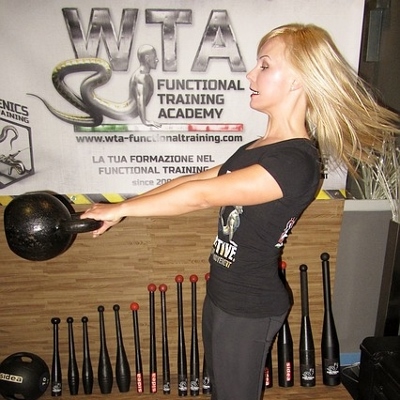 Much like how the Hunger Games and Avengers movies have contributed to the current popularity of archery, interest in kettlebells grew when the movie 300 was released in 2006; interest has been renewed as people search out strength training methods that differ from the norm. A simple search for information tends to bring the following to mind: “Mike Mahler,†and “maybe I should go vegan.†The former has been considered the authority on kettlebell training since 2001 at the earliest, and yes, he is a vegan.
Much like how the Hunger Games and Avengers movies have contributed to the current popularity of archery, interest in kettlebells grew when the movie 300 was released in 2006; interest has been renewed as people search out strength training methods that differ from the norm. A simple search for information tends to bring the following to mind: “Mike Mahler,†and “maybe I should go vegan.†The former has been considered the authority on kettlebell training since 2001 at the earliest, and yes, he is a vegan.
As Mahler informs anyone new to kettlebells, the training will make your physique look better, and it will build mental and physical strength that was thought to be impossible. It is not meant to replace other forms of exercise entirely, but it is effective, and it serves to reinforce the effects of an existing fitness program.
To get an idea of the intensity a kettlebell workout would entail, kettlebells start at 8 lb weights and go up to 105 lb; however, a kettlebell’s off-center weight distribution, and the actions a kettlebell workout entails, requires a certain degree of flexibility. You don’t need to be double-jointed, but it would be best to start with lighter weights until the essential movements are mastered. At the same time, as ballistic tools (combining high speed with resistance), kettlebells help develop flexibility because of the full range of motion demanded of the joints, as well as the full contraction range of muscles.
When you compare kettlebells, free weights, or dumbbells based on weight, strength training with a kettlebell sounds straightforward. The major difference is that good form becomes much more important due to the shape of a kettlebell. For one, its eccentric weight distribution means that you would quickly find yourself using your core muscles more often to complete one motion effectively, which has the indirect effect of building the strength in this region in addition to that of the targeted region, i.e., a more “holistic†workout results.
Based on this difference, it is prudent to use a kettlebell of a manageable weight. Mahler advises kettlebell newcomers to carry out 10-second overhead lockouts with a dumbbell first. This refers to the motion in which the shoulder is set in its socket (packed), the elbow is locked, the arm vertical, and the weight is held somewhat behind the head. If this is not possible, then the appropriate kettlebell should weigh less than the attempted dumbbell weight. If the overhead lockout can be carried out, then a kettlebell of equivalent weight or slightly heavier is suitable.





